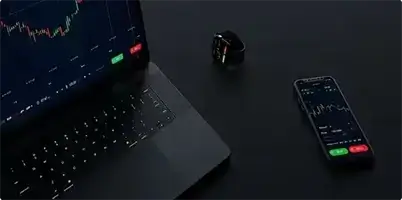
Darren Krett
Monday 19 December 2022
W-X
0
Comments (0)
Categories
Glossary
Learning
OPTION VALUATION MODEL: This model that assesses option prices incorporates six factors into its pricing assumptions: the underlying security price, the strike price, time to expiration, interest rates, volatility of the underlying and any dividends to be paid. The model develops theoretical valuations for individual options and provides information necessary to determine proper ratios in a neutral spread position. It also assumes that underlying price movement is random with no directional bias except for a slight upward bias related to carrying costs.
OPTION WRITING: The result of selling options in an opening transaction.
OPTIONS CLEARING CORPORATION: (OCC) The issuer of all options contracts trade- on the Amex/NASAQ, Chicago Board Options Exchange, Pacific Stock Exchange and Philadelphia Stock Exchange.
OTC: Over the Counter.
OUT OF THE MONEY: A call option is out of the money if the strike price is greater than the market price of the underlying security. A put option is out of the money if the strike price is less than the market price of the underlying security. In other words, an option with no parity value.
OVERVALUED OPTION: An option trading at more than its' theoretical value, as estimated using an option valuation model.
PARITY: A call option is said to be at 'parity' when the price of the option equals the underlying stock price minus the strike price. A put option is at 'parity' when the price of the option equals the strike price minus the underlying stock price. Also called intrinsic value.
PATH DEPENDENCE: Dependence on the actual path taken by an underlier over a specific timeframe
PLATYKURTOSIS: When a distribution's tails are thinner than those of the normal distribution.
PREMIUM: The price of an option contract, determined in the competitive marketplace, that the buyer of the option pays to the option seller for the rights conveyed by the option contract.
PRIMARY INSTRUMENT: A financial instrument whose value is not derived from that of another instrument, but instead is determined by the market.
PROBABILITY DISTRIBUTION: A mathematical function which describes the events in the sample space must equal one. probabilities of possible events in a "sample space." The sum probability of all the possible call.
PUT/CALL PARITY: A formula that relates the price of a put to the price of a corresponding underlying instrument.
PUT/CALL RATIO: The number of puts traded each day divided by the number of calls traded each day. Near market lows, the put/call ratio will rise as options traders become excessively worried about downside risk and seek to hedge their portfolios with puts, or speculate on further downside activity. Near market peaks, interest in calls heats up to form a low put/call ratio. The put/call ratio is thus a contrary indicator when it reaches past extreme highs or lows.
PUT OPTION: A put option is a financial derivative that gives the right, but not the obligation, to sell an underlying asset at a predetermined strike price within a specific timeframe. This type of option is typically used as a hedge against potential losses in other investments or to speculate on future market movements. Put options are purchased when investors anticipate that the value of the instrument will go down.
RATIO SPREAD: Any option spread which consists of an unequal number of long and short contracts of options of the same class. Usually, this term refers to vertical spreads.

Darren Krett
Monday 19 December 2022
0
Comments (0)

Darren Krett
Monday 19 December 2022
0
Comments (0)
Get ahead of the wave and sign up to our socials to get access to exclusive offers, videos, tutorials and latest news.
© 2015 - 2025 Leviathan Financial Management LLC. All Rights Reserved.
Legal Disclaimer: The information provided in the Leviathan website is for informational purposes only. It should not be considered legal or financial advice. You should consult with a financial advisor professional to determine what may be best for your individual needs. Leviathan Financial Management does not make any guarantee or other promise as to any results that may be obtained from using our content. No one should make any investment decision without first consulting his or her own financial advisor and conducting his or her own research and due diligence. To the maximum extent permitted by law, Leviathan Financial Management disclaims any and all liability in the event any information, commentary, analysis, opinions, advice and/or recommendations prove to be inaccurate, incomplete or unreliable, or result in any investment or other losses. Content contained on or made available through the website is not intended to and does not constitute legal advice or investment advice. Your use of the information on the website or materials linked from the Web is at your own risk.